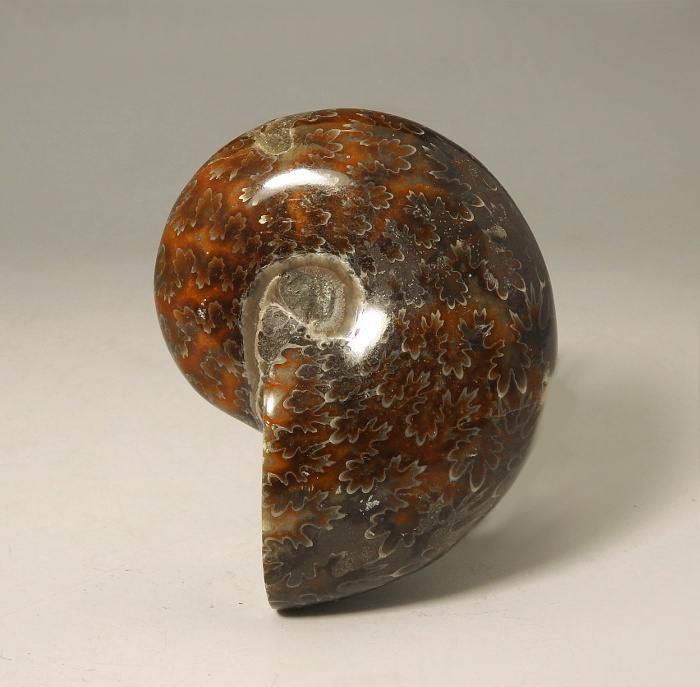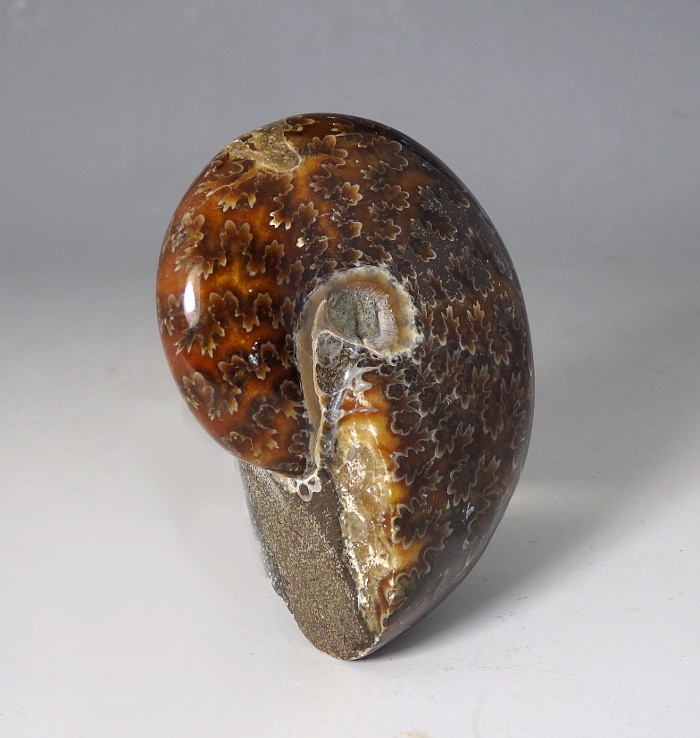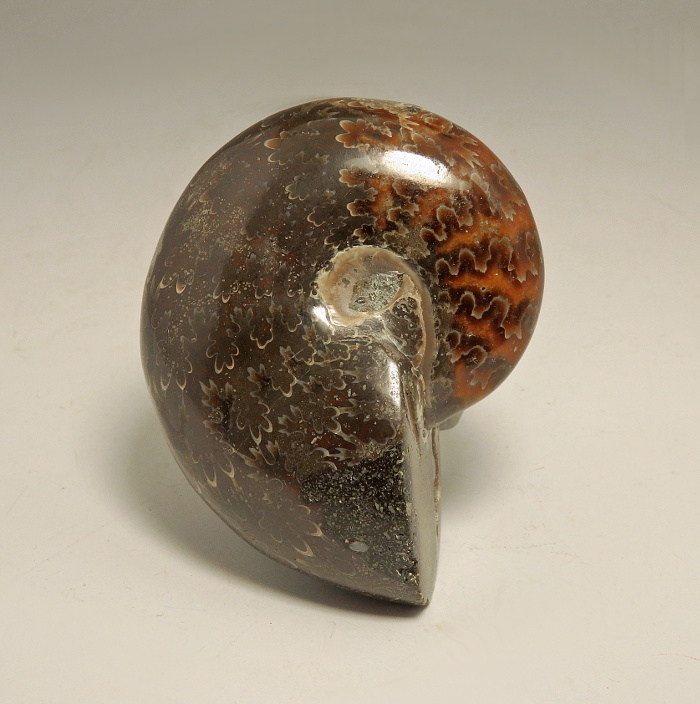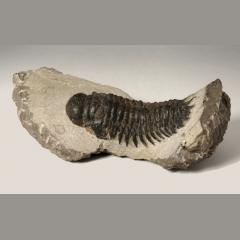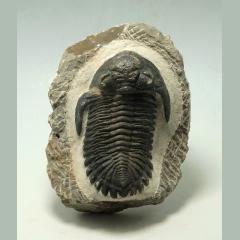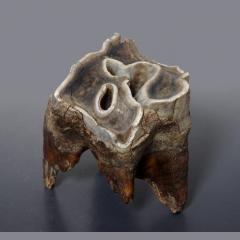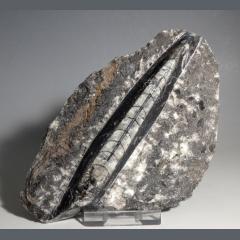Polished Phylloceras Ammonite From Madagascar
Item Description
Upper Cretaceous Period- C. 100-66 Million Years Ago
Order to which the fossil belongs: Phylloceratida
Name of which the family belongs: Phylloceratidae
Informal name of the fossil: Phylloceratid
A compressed, involute shell form with a distinctive complex, frilly suture line which characterise the shells of these small to medium-sized ammonites. They can either be simply ornamented with growth lines or nearly smooth and the aperture is curved. The streamlined profile of the shell as well as the rounded venter would have allowed this genus to swim at moderate speeds bu jet propulsion. The typical diameter would have been 10cm.
Ammonites are a form of ammonoid which are distinguished by their complex suture lines. They evolved very rapidly to produce numerous species and genera, but it was during the Late Cretaceous period that the ammonites and other marine groups, like belemnites, and terrestrial groups, like dinosaurs became extinct.
The name ammonite, was inspired by the spiral shape of their fossilized shells, resembling tightly coiled rams’ horns. Many ammonoids probably lived in the open water rather than at the sea bottom, this is due to the fact that their fossils are often found in rocks that were laid down under conditions where no bottom-dwelling life is found. They are typically evolute with the inner whorls exposed, but some are commonly stout and more involute and strongly ribbed with pronounced tubercles.
A beautiful example of a decorative polished Ammonite with good strong colour.
Size: 58mm x 70mm
£25.00
No Longer Available
